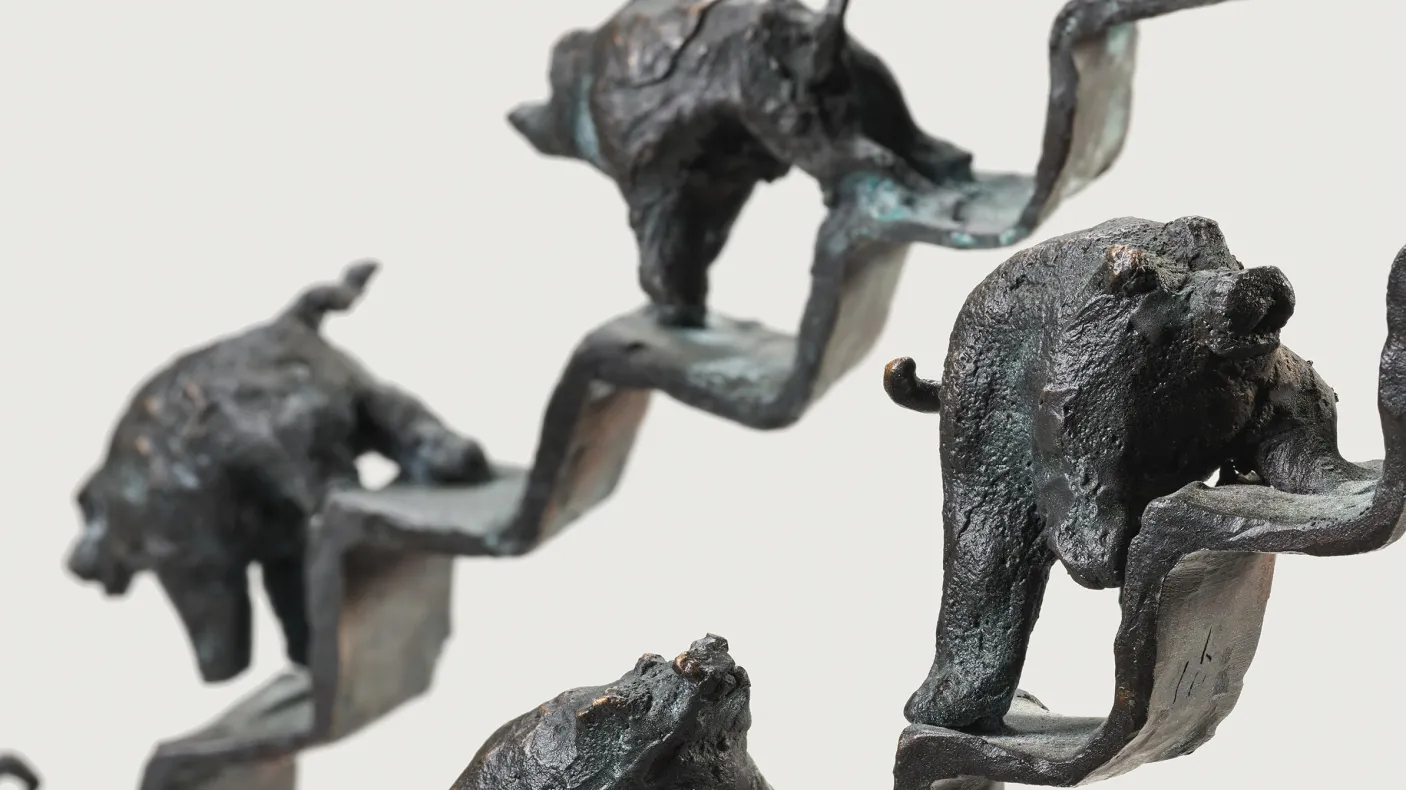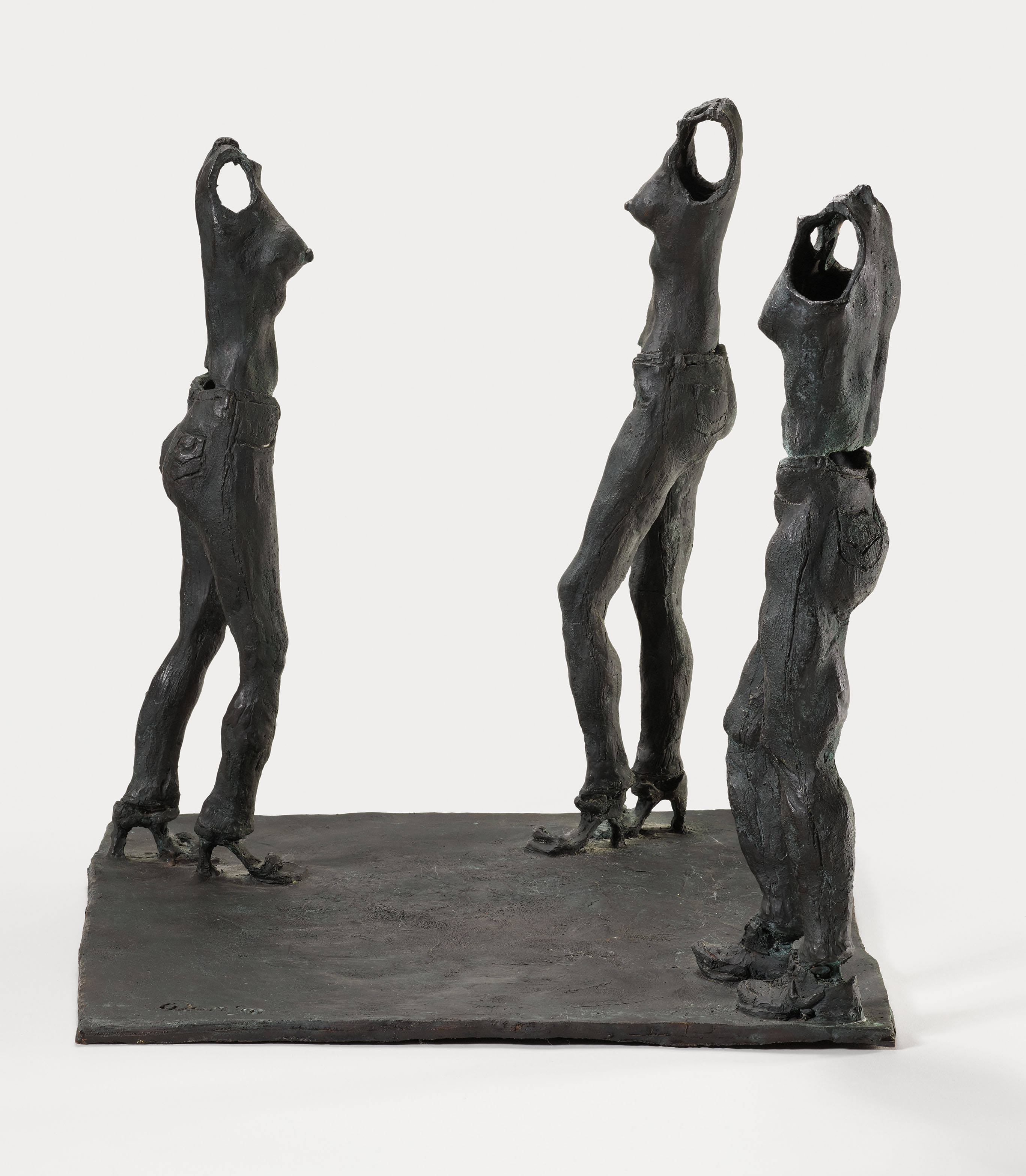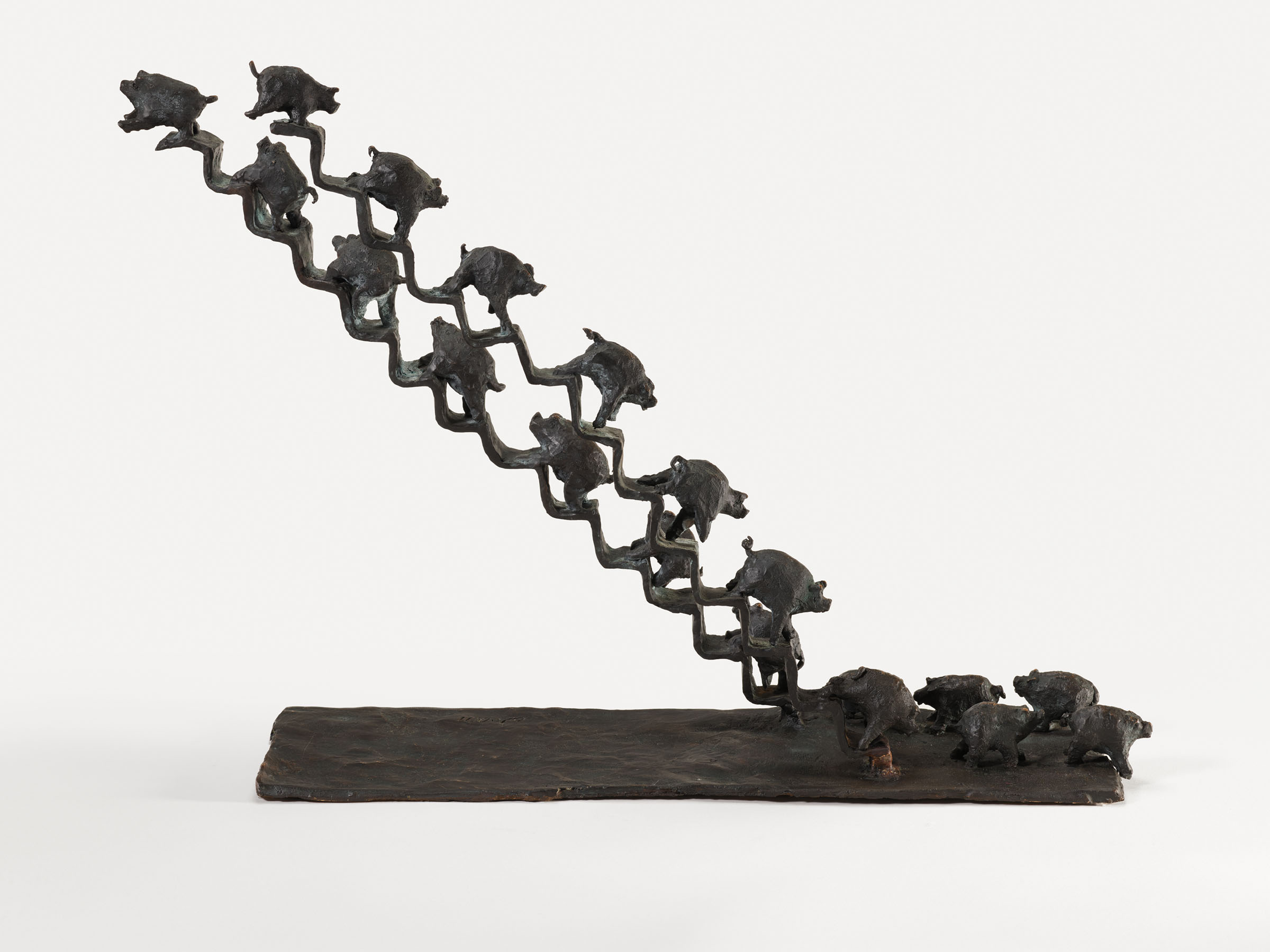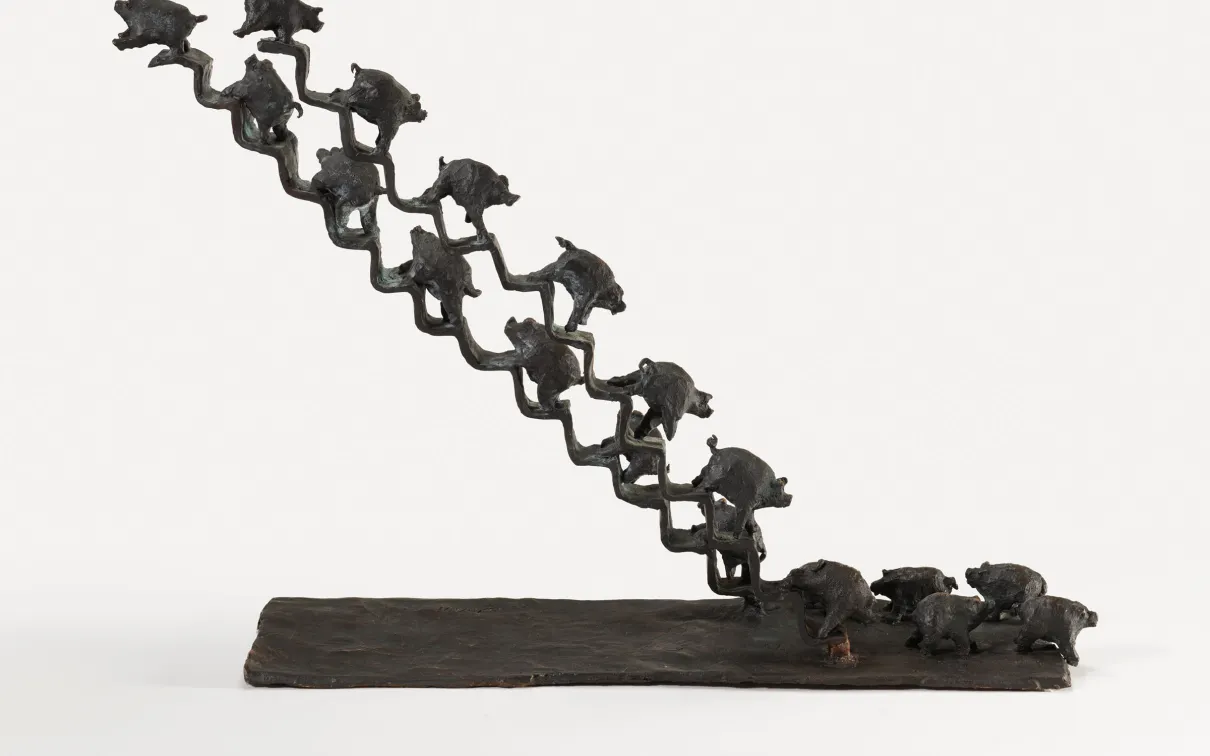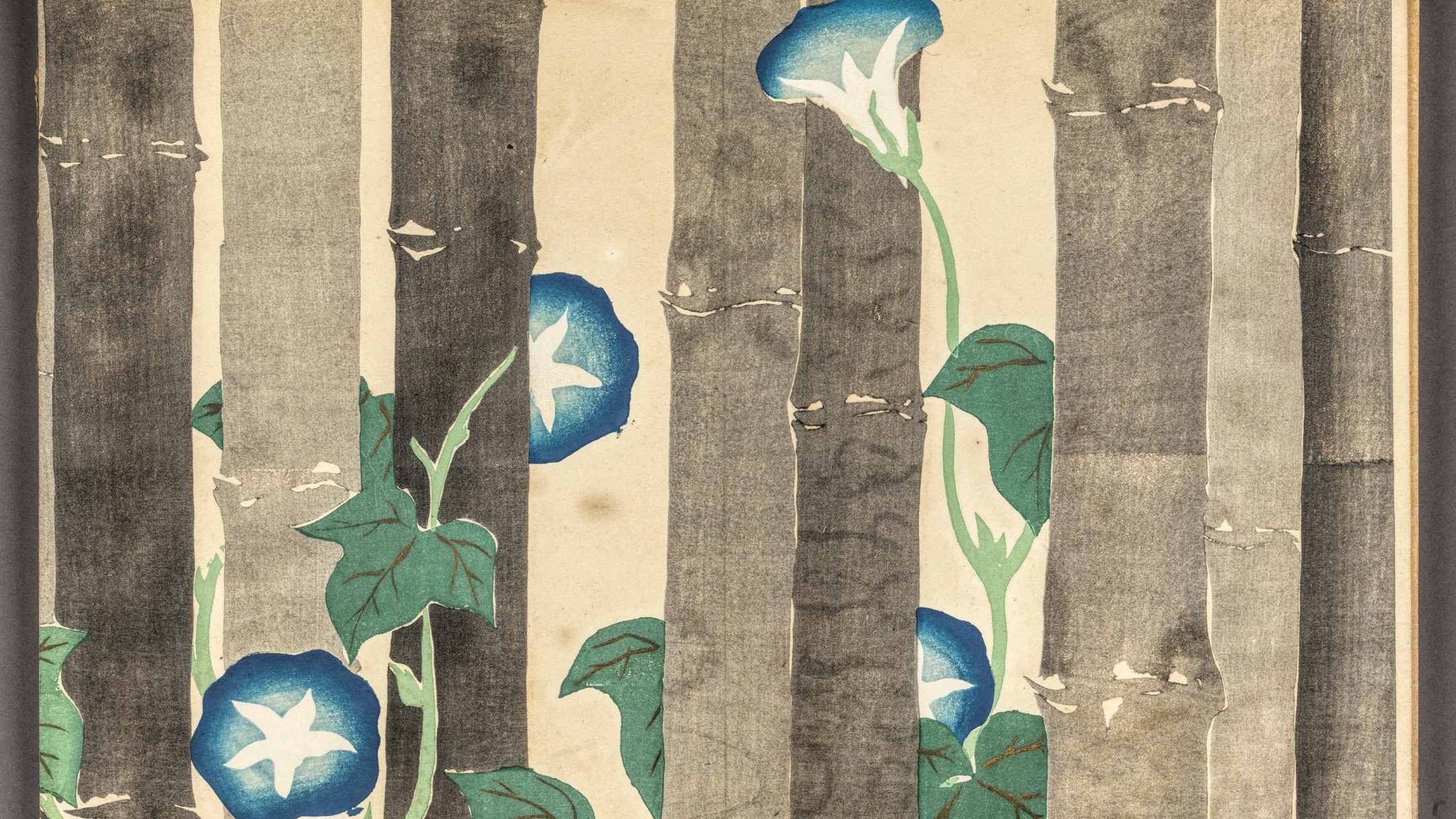The art of Won Lee
Published
Category
One
Won Lee (b. Korea, 1946; d. Toronto, 2021; Korean name Won-Hyung Lee) was a celebrated Korean Canadian artist whose influence on the study of public art was as sizeable as his towering sculptures seen in public arenas around the world. Having contracted polio at the age of six, Lee lived with a curved spine for most of his life. His reflections on the human body are evident in the distinctive sculptures he crafted from bronze and clay. Drawing inspiration from the works of Alberto Giacometti and combining abstract and figurative elements, Lee’s sculptures are characterized by elongated human figures with small heads, large chests and buttocks, and empty abdomens. Most of his sculptures feature more than one figure, emphasizing themes of togetherness.
Lee’s trajectory as an artist was unique. Initially, he studied English at the Hankuk University of Foreign Studies in South Korea, before moving to the U.S. to earn his BFA at Pepperdine University. Struggling to make ends meet as a full-time artist, Lee later completed a business degree at the University of British Columbia and worked as an accountant. At the age of 56, in 2002, he pursued his true passion and enrolled in an MFA program at Johnson State College. This was where his career as a sculptor flourished, and he gained widespread recognition from that time until his death in 2021.
Lee is known for his large-scale sculptures seen in public parks and in front of the facades of commercial and government buildings across the U.S., South Korea, Vietnam, Mexico, and the Democratic Republic of Congo. His work was also featured in numerous solo and group exhibitions at galleries in Canada, China, South Korea, Mexico, and other countries. In honour of her late husband, Lee’s wife, Mrs. Hyon Chu Lee, recently donated $100,000 to refresh the Museum’s Gallery of Korea and contributed three Won Lee sculptures to the collection (currently not on display). The three sculptures are astute reflections of Lee’s thoughts on corporeality, the world’s exploitation of human and natural resources, and our human condition.
Pigs running up and down stairs evoke the repetitive nature of daily routines, and the futility of human desire. This witty sculpture conveys nuanced messages through its playful form. What are the pigs running away from? Or are they running toward something?
two
One of the pieces, Who’s There? (2011), features three human figures standing topless but wearing jeans and shoes. The sculpture was cast after Lee’s visit to a Levi’s factory in Costa Rica. While conversing with young workers, Lee learned that they were paid just $1 per hour to make jeans, while it took them more than three months of wages to save enough to buy a pair of the very same Levi’s jeans they worked on daily. Stunned by this conversation, Lee created the piece, which depicts one female, one male, and one cross[1]gender figure. Lee also created red jeans out of papier mâché and staged a performance in which he burned the jeans at his winter home in Mexico, surrounded by friends. The sculpture and performance bring into focus global wealth disparity, the exploitation of child labour in the global fashion industry, and our daily complicity as consumers.
A group of pigs running up and down stairs in two rows in Herd #1 (2011) evokes themes of life’s learning curve, the repetitive nature of daily routines, and the futility of human desire. This witty sculpture conveys these nuanced messages through its playful form. What are the pigs running away from? Or are they running toward something? Lee’s art invites viewers to take this analogy and apply it to their experiences and interactions.
The third sculpture donated by Mrs. Lee was inspired by a serendipitous encounter Won Lee had with young students in China. During a visit to a school for a project, the students were making loud noises. When Lee asked them to meditate, two girls immediately assumed meditative poses resembling that of the Buddha. Lee quickly sketched them and later created Meditators #2 (2006). After creating this work, he cast a series of two large human figures (each over 250 cm tall) meditating together in different poses. One of this series is permanently installed at Vermont State University, U.S.
For Lee, meditating together was a key concept. His sculptures consistently feature two or more figures, never a single form. The figures in Lee’s sculptures are not solitary. Instead, they remain in communion with each other, a position that reflects Lee’s exploration of human engagement and connection.
Lee established the Won Lee Awards, which continue to aid emerging talents and artists in need. Mrs. Lee continues to carry on his legacy through philanthropic endeavours supporting artists with disabilities and emerging artists worldwide.
Vicki
Vicki Kwon is Associate Curator of Korean Art and Culture at ROM.

